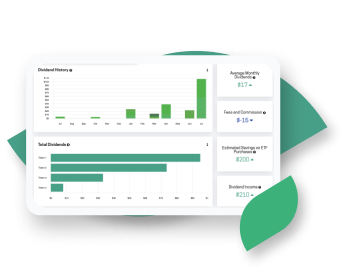This is a guest post from Aleš Chromec, Co-Founder of Dividend Watch, an all-in-one tracker for dividend investors.
Don’t rely on dividend yield. Use yield on cost instead.
It is important not to rely solely on dividend yield when choosing dividend-paying stocks, as the yield can be misleading. This is because the yield is calculated based on the current price of the stock, and the stock price can fluctuate significantly. A high yield may seem appealing, but if the stock price drops significantly, the yield may no longer be as attractive. On the other hand, a stock with a lower yield may actually be a better investment if it has a history of consistent or increasing dividends.
This is where dividend growth and yield on cost come into play. Dividend growth refers to the increase in the amount of the dividend over time, and yield on cost takes into account both the dividend yield and the growth in the dividend. By considering both of these factors, an investor can get a more accurate picture of the potential returns.
Don’t diversify just based on the value
It is important to not only diversify the value of your stock portfolio but also to diversify your dividend income by sector. This is because different sectors of the economy can perform differently at different times, and relying too heavily on any one sector can increase your risk of dividend cutting.
For example, if you have a significant portion of your dividend income coming from the energy sector and energy companies get into trouble, your dividend income may be impacted.
On the other hand, if you have a diverse portfolio of dividend-paying stocks from a variety of sectors, you can potentially mitigate those risks. Diversifying your dividend income by sector can help to smooth out the ups and downs of the market.
Include REITs and Covered Calls
REITs
Real Estate Investment Trusts are companies that own and operate income-generating real estate assets, such as office buildings, shopping centers, and apartment buildings. REITs offer an opportunity to invest in real estate without the need to directly own and manage property but still get monthly rent in form of dividends.
Very popular REITs are O (Realty Income), PLD (Prologis), American Tower (AMT), and Simon Property group (SPG).
Covered calls ETFs
Covered call ETFs are funds that hold a portfolio of stocks and also sell call options on those stocks as a way to generate income through option premiums. They have typically low volatility and high dividend returns.
Two of the most popular funds are Global X NASDAQ 100 Covered Call ETF (QYLD) and JPMorgan Equity Premium Income ETF (JEPI).
Hold forever? When to sell dividend stocks…
Deciding when to sell dividend-paying stocks can be a challenging task. On one hand, the regular income from dividends can be a valuable source of income, and many investors choose to hold onto dividend-paying stocks for the long term. On the other hand, there may be circumstances when it makes sense to sell a dividend-paying stock.
One thing to consider when deciding whether to sell a dividend-paying stock is the company's dividend history and growth prospects. If the company has a track record of consistently increasing its dividends, it may be a good candidate for long-term holding, even if the stock price has dropped.
However, if the company has stagnant or declining dividends, it may be a sign that the company is struggling financially and may not be a good long-term investment. While there may not be a perfect time to sell, it is usually not recommended to sell a stock solely because the price has dropped, unless you no longer believe in its long-term future.
How Passiv Can Help
Dividends are an excellent investing tactic. They allow your money to effectively work for you, generating returns on your assets in addition to the interest they accrue over time. The marriage between Passiv and dividend-yielding ETFs is a match made in heaven.
By setting a target allocation to your portfolio, once your assets issue a dividend, Passiv will calculate the trades to put that dividend to work. For example, you can customize your portfolio to use available cash to purchase the most underweight assets in your portfolio. Once that dividend hits your cash account, you will receive a notification that there is cash available and Passiv will calculate the trades to boost those underweight assets to rebalance your account. All you have to do is click the Allocate button to reinvest your dividends and enjoy your compounding interests.
You can also set cash management rules to ensure when dividends hit your cash account, Passiv will calculate trades within the amount you want to invest or retain a certain amount of that new cash in your cash account.

Unlock Your Dividends
Grow your wealth, sign up in less than two clicks and get your dividends working for you
Get StartedOnce you have taken your position and allocated a portion of your portfolio to dividend ETFs, the fun part of Passiv comes in: watching it perform. Our Reporting tab allows you comprehensive insights into your dividend performance.
- Dividend History - the amount of dividend received in each month during the period. You can hove over each bar to see which securities contributed to the total for the month.
- Total Dividend - total dividend received for each security during the selected period.
- Average Monthly Dividend - the average monthly dividend income earned during the period.
- Dividend Income - the total dividend income earned during the period
If dividend investing is your thing or you want it to be, then dividend ETFs may be a good choice for you. But consider all the factors to give yourself a more accurate picture of the potential returns.
Give five more minutes of your time to get more education on dividends, read one of these great articles:
https://passiv.com/blog/exempt-interest-dividends/
https://passiv.com/blog/best-dividend-etfs-in-canada-for-2021/


